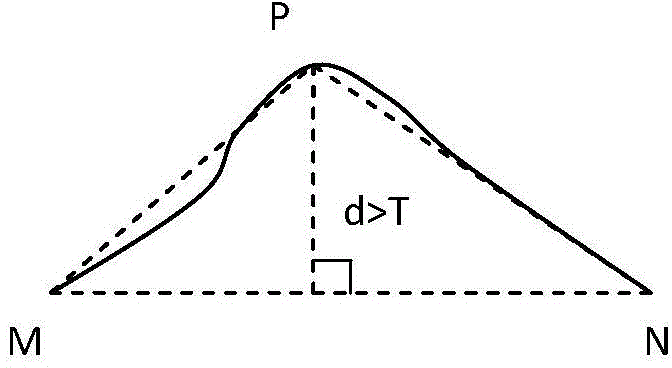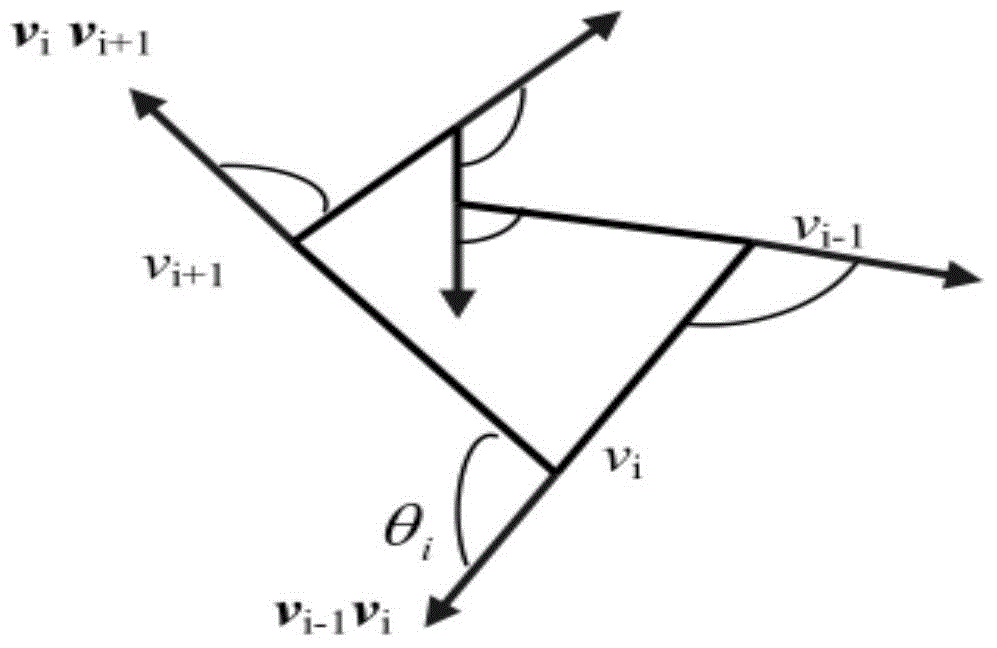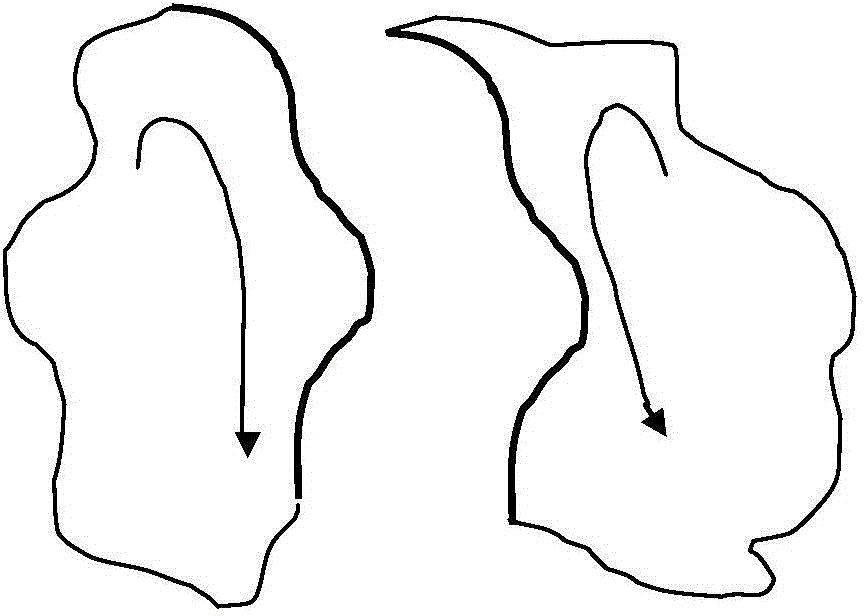Contour-based two-dimensional fragment splicing method
A technology of fragments and contours, applied in image data processing, instruments, calculations, etc., can solve the problems of increased comparison in the matching stage, reduced search efficiency, incomplete description of contour shapes, etc., to achieve a small amount of calculation and improve matching efficiency. Effect
- Summary
- Abstract
- Description
- Claims
- Application Information
AI Technical Summary
Problems solved by technology
Method used
Image
Examples
Embodiment Construction
[0048] The present invention is described in detail below in conjunction with accompanying drawing:
[0049] figure 1 It is a schematic diagram of the Douglas-peucker broken line approximation to the open curve. The solid line is an open curve, and M and N are the two endpoints of the open curve, which are the initial vertices of the broken line. The degree of approximation of the line segment MN to the original open curve depends on the maximum distance from the point on the curve between M and N to the line segment MN, that is, the approximation distance. Find the point P on the open curve that is farthest from the line segment MN, calculate the maximum distance d, if the maximum distance d is less than the threshold T (T>0), the degree of approximation of the line segment MN to the curve is good, and the curve has no broken lines between MN Vertex; otherwise point P joins M and N to become a new polyline vertex, and divides the curve into two. Repeat the above operation ...
PUM
 Login to View More
Login to View More Abstract
Description
Claims
Application Information
 Login to View More
Login to View More - R&D
- Intellectual Property
- Life Sciences
- Materials
- Tech Scout
- Unparalleled Data Quality
- Higher Quality Content
- 60% Fewer Hallucinations
Browse by: Latest US Patents, China's latest patents, Technical Efficacy Thesaurus, Application Domain, Technology Topic, Popular Technical Reports.
© 2025 PatSnap. All rights reserved.Legal|Privacy policy|Modern Slavery Act Transparency Statement|Sitemap|About US| Contact US: help@patsnap.com



